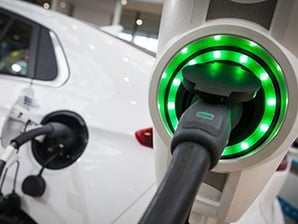The recession is not a major threat to the stock market right now. That may seem like a week-long strike in which major retailers report disappointing profits and stock market declines.
See what's new!
Latest Blogs
In fact, the multiplication of P / E is a major cause. To show that recession does not mean the stock market, consider the S&P 500's SPX, -0.58% quarter return when returns-per-share (EPS) falls. On average over the past century, according to a survey, the S&P 500 did better when its EPS was lower than last year - not more.
The findings of the research company are summarized in the chart below. Note that the leading quarterly returns for the S&P 500 in the past came when its next four-quarter EPS was between 20% lower and 5% higher than it was a year earlier. With the exception of quarters where EPS was less than 20% than last year, there is a negative correlation between EPS growth and performance of the S&P 500.
Could that alternative work now? It seems impossible. Even though the company’s recent reduced profit margins, Standard & Poor’s estimates that the stock market following the fourth EPS from June 30 will be 28% higher than the comparable total of June 30, 2021.
What causes changes in P / E multiplication?
Pointing to a double wage instead of a pay rise, I do not rely on anything other than simple arithmetic. The market rate at any time is equal to E times in P / E, so if earnings (E) are not to blame, the only alternative is the possibility of multiplication (P / E).
Last year, the P / E of the U.S. stock market (based on the 12-month GAAP EPS track) has dropped to less than 20 from over 30. If this repetition had remained the same, the S&P 500 today would be 28% higher than last year. In fact it is 6% lower.
What caused the P / E frequency to drop dramatically? There are many factors, but perhaps the most important is inflation. History teaches us that the average P / E ratio is high when inflation is low, and vice versa.
This opposite relationship makes sense - point. As many have noted in recent months, high inflation means that future gains should be reduced by a significant amount when calculating their current value.
However, this thinking - repeated - is part of the story. The other part, as I indicated in a column six months ago, is that companies' profits per share tend to grow faster when inflation is high. Over the past 150 years, this rapid growth of the EPS has significantly reduced the repetition of low P / E when inflation heats up - leaving the stock market, on average, free of charge during inflation. This helps to explain the concise results in the chart.
Most investors ignore this tendency for inflation to grow rapidly in inflation - a mistake that economists refer to as "inflation fraud." It is not just investors who are to blame for this, moreover; company executives as well. FactSet reports that 85% of S&P 500 companies cited inflation demand for their first quarter - the highest percentage since at least since 2010.
Rather than lamenting the mistakes of the investors, the wisest response would be to bet on their erroneous beliefs. One way to do this would be to place buy orders below market value in companies with strong earnings. To the extent that investors illegally punish the shares of those companies, you will get some of them for the value of money. If so, history suggests that you will eventually reap the benefits.





No comments:
Post a Comment